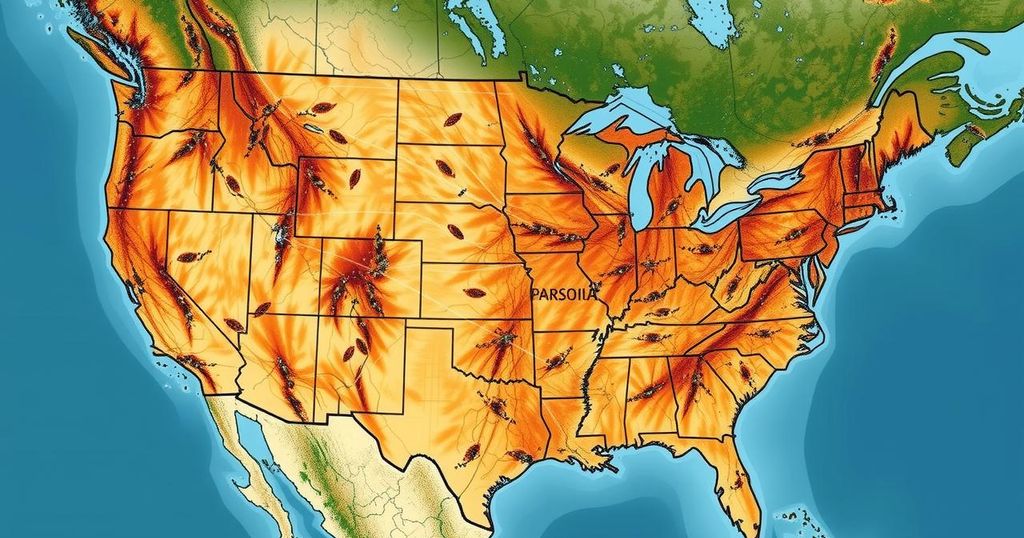New research forecasts that climate change will exacerbate the spread of the spongy moth across North America due to diminishing fungal controls. The study emphasizes the interconnectedness of ecological systems and the significant impacts of climate variations on invasive species populations, underscoring the need for a more integrated approach in ecological research.
Recent studies indicate that climate change is likely to facilitate the expansion of the invasive spongy moth across North America. Research conducted by the University of Chicago and Argonne National Laboratory reveals that escalating temperatures and drier conditions will hinder the proliferation of a fungus, which naturally regulates the moth’s population. The findings, published in Nature Climate Change, underscore the importance of examining the interactions among various species when assessing the ecological consequences of climate change.
The spongy moth (Lymantria dispar), originally introduced to New England in 1869, has become a significant pest, causing extensive deforestation and monetary loss. Although a fungus known as Entomophaga maimaiga has previously helped control its population, climate factors are projected to diminish the effectiveness of this biological control. With fewer fungal infections among moths, a potential surge in their numbers could lead to increased deforestation. The research emphasizes that even minor reductions in mortality rates for the moth can result in substantial increases in their numbers due to a compounding effect.
Dr. Greg Dwyer, a leading figure in the study, notes that while many prior climate change studies have focused on individual species, the interconnected nature of ecosystems must be considered to understand the broader implications of climate change. The research team employed sophisticated computer modeling to assess how climate variables affect both moth populations and fungal infection rates. Their predictions suggest a worrying trend: as conditions become hotter and drier, the rates of fungal infections are forecasted to decline significantly, allowing greater survival rates for spongy moths.
Dr. Dwyer and his team, including atmospheric scientist Dr. Jiali Wang and Dr. Rao Kotamarthi, adapted large-scale climate models to provide localized predictions. Their analyses highlight that current climatic changes have already led to spongy moth outbreaks sooner than anticipated. Dr. Dwyer remarked on the alarming nature of their findings, stating that their projections, though pessimistic, may not fully capture the speed and severity of the issue. This research serves as a clarion call for greater awareness and action regarding the impacts of climate change on invasive species management.
The issue of invasive species, particularly the spongy moth, poses a growing threat to North American ecosystems. Since its introduction from Europe over a century ago, the moth has proliferated, leading to significant ecological and economic challenges. The role of natural controls, such as the fungal pathogen Entomophaga maimaiga, has been instrumental in regulating the moth’s population. However, climate change threatens to disrupt these natural controls, enabling the moth to expand its range and exacerbate deforestation. This highlights the need for integrated approaches that consider multiple species and environmental interactions when studying ecological impacts of climate change.
In conclusion, the intersection of climate change and invasive species dynamics presents formidable challenges for North American forests. The research led by Dr. Greg Dwyer illustrates how hotter, drier conditions can decrease the effectiveness of natural controls on invasive species like the spongy moth, leading to potentially disastrous ecological consequences. As climate change continues to make its mark, it is essential for researchers and policymakers to develop comprehensive management strategies that address these complex interactions to protect vulnerable forest ecosystems.
Original Source: www.technologynetworks.com






